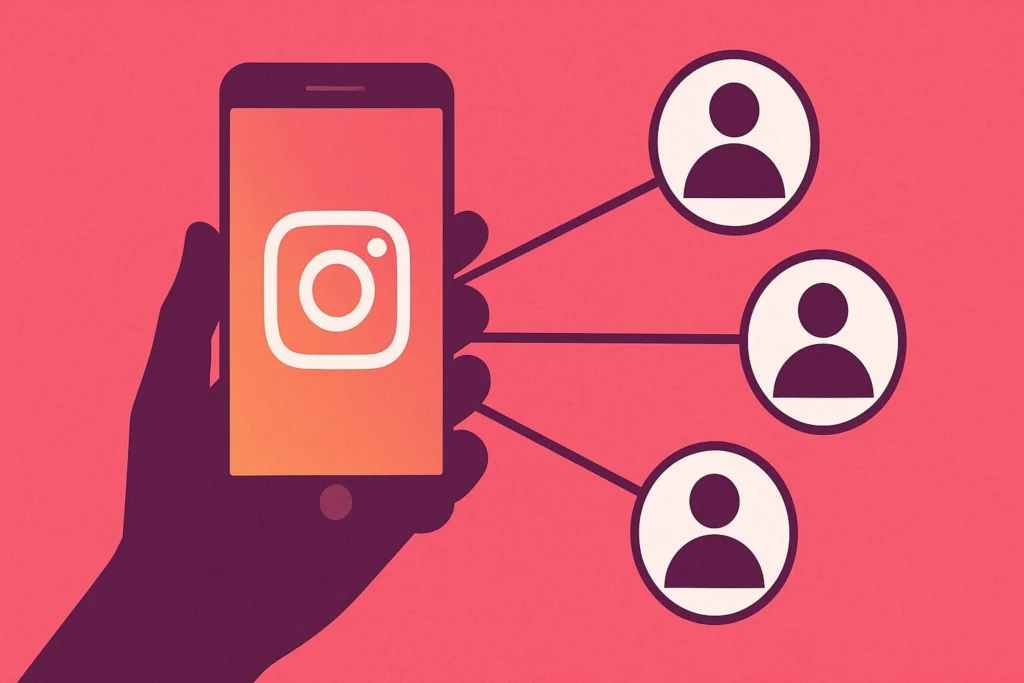To monetize your Instagram content effectively, consider three key strategies. First, implement membership and subscription models to secure steady income from dedicated subscribers. Creators like Chanel Kreuzer demonstrate its potential through consistent monthly earnings. Second, engage in affiliate and influencer marketing, where commissions can reach up to 50%, ensuring transparency and audience understanding to enhance engagement. Finally, explore product sales and e-commerce opportunities, using Instagram Shopping and print-on-demand services to boost conversion rates with zero upfront costs. Employing high-quality visuals further amplifies sales effectiveness. These strategies are multifaceted, offering expanded insights into optimizing your content monetization efforts.
Key Takeaways
- Create a membership site to monetize exclusive content and maintain steady income from subscribers.
- Engage in affiliate marketing to earn commissions by promoting products aligned with your audience’s interests.
- Use sponsored content with transparency to collaborate with brands and enhance revenue through influencer marketing.
- Set up an Instagram Shop to sell products directly, increasing engagement and conversion rates.
- Offer digital products like eBooks or online courses for high profit margins with minimal overhead.
Membership and Subscription Models
In the dynamic landscape of social media monetization, membership and subscription models have emerged as a viable strategy for Instagram creators seeking to capitalize on their influence and content.
Launching a membership site offers creators the opportunity to monetize exclusive content, achieving an average conversion rate of 2% to 5% of followers turning into paying subscribers. This approach, as demonstrated by platforms like Studio Bloom, provides Instagram creators with a steady income stream. Instagram subscriptions, for instance, allow creators like Chanel Kreuzer to earn approximately $398 per month from 200 subscribers, showcasing the potential financial benefits.
However, while subscription models initially offer 100% revenue retention, creators often face challenges such as limited control over their content due to Instagram’s policies.
To mitigate these risks, building a standalone membership site can offer better control and flexibility, safeguarding against evolving platform restrictions. Engaging with subscribers through dedicated posts and stories is essential to maintain interest and reduce churn. This proactive approach guarantees sustained revenue and a loyal subscriber base.
Ultimately, creators must navigate the intricacies of subscription models, balancing platform constraints with the benefits of a dedicated membership site.
Affiliate and Influencer Marketing
Affiliate and influencer marketing represent powerful tools in the monetization arsenal of Instagram creators, offering substantial income opportunities through strategic partnerships and product promotions.
By leveraging affiliate marketing on Instagram, creators can promote products via unique affiliate links, earning commissions that range from 5% to 50%, depending on the product category. Sponsored content is a prevalent strategy, with 40% of influencers incorporating it into their monetization methods. Trust with your followers is essential, hence the frequent use of #ad or #sponsored hashtags to maintain transparency.
To maximize earnings, creators must focus on several key areas:
- Engagement Rates: Brands often prioritize influencers with micro to mid-tier followings (10k-100k followers), as they typically yield higher engagement rates and authentic interactions.
- Audience Preferences: Understanding and targeting audience preferences guarantees that promotions resonate, increasing the likelihood of conversions through affiliate links.
- Influencer Partnerships: Establishing successful influencer partnerships with brands can lead to long-term collaborations and increased revenue streams.
- Analyze Performance Metrics: Regularly reviewing performance metrics allows creators to refine strategies, enhancing the effectiveness of their promotional efforts.
In a landscape where transparency and authenticity are paramount, these strategies empower creators to monetize effectively while maintaining trust with their followers.
Product Sales and E-Commerce
Building on the dynamics of affiliate and influencer marketing, Instagram creators can further expand their monetization strategies through product sales and e-commerce. Instagram Shopping is a powerful tool, allowing creators to set up shops directly within the platform. By utilizing high-quality images, creators can notably boost engagement rates, leading to higher conversion rates. For those hesitant about inventory risks, print-on-demand services provide a pragmatic solution, enabling the sale of custom merchandise like T-shirts and mugs without upfront costs.
Selling digital products such as eBooks or online courses offers a lucrative avenue due to minimal overheads. Platforms like Gumroad facilitate seamless transactions, making it easier for creators to distribute their digital content. Meanwhile, affiliate marketing remains a robust complement to direct product sales. By leveraging unique referral links, creators can earn substantial commissions, often ranging from 10% to 50%, thereby enhancing their revenue streams.
| Strategy | Benefit | Example Platforms |
|---|---|---|
| Instagram Shopping | Higher engagement rates | |
| Print-on-Demand | No upfront inventory costs | Teespring, Printful |
| Digital Products | High profit margins | Gumroad, Udemy |
| Affiliate Marketing | Additional revenue through commissions | Amazon Associates, CJ |
| High-Quality Images | Enhanced conversion rates | Canva, Adobe Photoshop |
Through strategic e-commerce initiatives, creators can transform their Instagram presence into a profitable venture.
Frequently Asked Questions
How to Monetize Content on Instagram?
To monetize Instagram content, employ strategies like sponsored posts and affiliate marketing. Enhance brand partnerships by leveraging digital products, content creation, and niche targeting. Utilize Instagram stories, video content, and analytics tracking for improved audience engagement.
What Is the Criteria to Get Monetized on Instagram?
To achieve Instagram monetization, users must meet eligibility criteria such as compliance with guidelines, maintaining content quality, and fostering audience engagement. Additionally, niche selection, follower authenticity, and leveraging platform features and monetization tools enhance influencer marketing and brand partnerships.
How to Monetize Instagram With 1,000 Followers?
To monetize Instagram with 1,000 followers, consider affiliate partnerships and sponsored posts. Explore product promotions, brand collaborations, and digital products. Leverage membership offerings, online courses, merchandising options, influencer marketing, and content licensing for diverse revenue streams.
How to Monetize Your Instagram in 2024?
In 2024, monetizing Instagram involves leveraging Instagram Ads, Affiliate Marketing, and Sponsored Posts, alongside selling Digital Products, Merchandise, and Online Courses. Engage in Brand Collaborations, utilize Video Monetization, and explore Content Repurposing and Membership Programs for diversified income.
Conclusion
To summarize, the monetization of Instagram content can be effectively achieved through strategic approaches such as membership and subscription models, affiliate and influencer marketing, and product sales within e-commerce frameworks. These strategies capitalize on the platform’s expansive reach and engagement potential, enabling content creators to forge sustainable revenue streams. By leveraging these methods, creators can align their offerings with audience expectations, thereby enhancing both profitability and brand loyalty. This synthesis of digital innovation and commerce underscores the transformative potential of social media platforms in modern economies.




